Citrus trees can be grown in containers or simply in the ground and require constant care. This makes them quite demanding of any gardener’s attention.
Factors to particularly look out for are the amount of water, sunshine, and fertilizer to allow them to flourish and reach their maximum growth and yield in no time.
So, what are the best citrus tree fertilizers? Here is a curated list of the top choices for your convenience:
- Fox Farm FX14640 Happy Frog Citrus & Avocado Fertilizer
- Miracle-Gro Continuous Release Citrus Fertilizer
- Jobe’s Organics Citrus Fertilizer Spikes
- Down To Earth Organic Citrus Fertilizer
- Miracle-Gro Fruit & Citrus Spikes
To know more about why these citrus tree fertilizers are particularly great, when and how often to use them, when they shouldn’t be used, and a detailed guide on how to use them, read further this article!
When to Fertilize Citrus Trees?
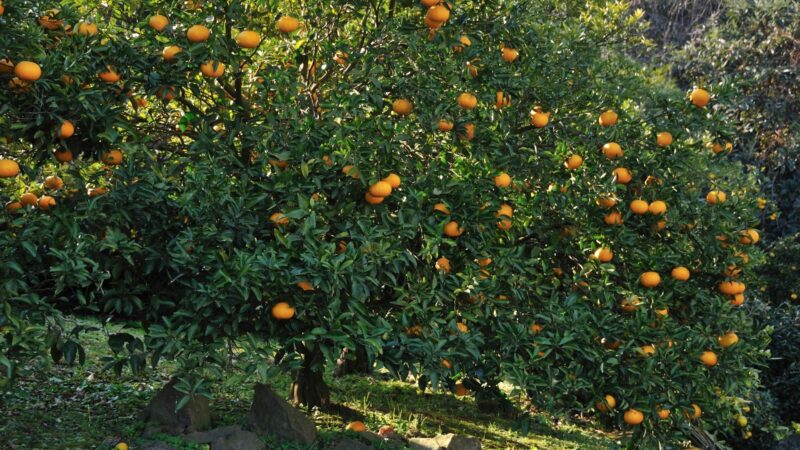
The rule of thumb when applying citrus tree fertilizers is once every 1 to 2 months during spring and summer. Then, once every 2 to 3 months in the fall and winter seasons.
How Often to Use Citrus Tree Fertilizer?
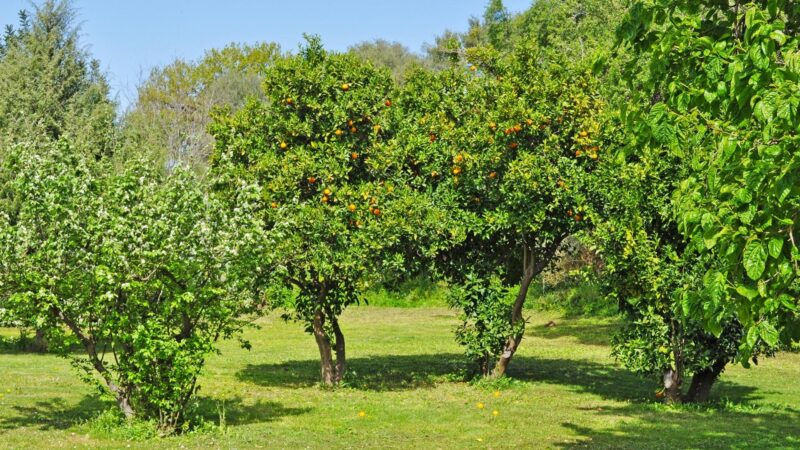
Citrus trees should be fertilized 3 times per year with fertilizers that have nitrogen content and other essential micronutrients in them.
Best Citrus Tree Fertilizers
Fox Farm FX14640 Happy Frog Citrus & Avocado Fertilizer
FoxFarm boasts high levels of nitrogen content in this product. This helps promote citrus fruit leaf growth and allows citrus trees to flourish healthily. It also reduces the risk of leaf discoloration, premature ripening of fruits, and fruit drop.
This water-soluble feed consists of 25% nitrogen, 15% potassium oxide, 15% phosphorous pentoxide, and trace elements, specifically manganese, iron, and copper.
The manufacturer recommends mixing 5 grams of the fertilizer into 2.5 liters of water and then applying weekly between feeds from April to September. A little goes a long way with these fertilizers, but you would have to wait patiently to see the results!
Miracle-Gro Continuous Release Citrus Fertilizer
Contains a specially-made formula to help existing or new in-ground citrus trees to grow healthily, maximize their fruit yield, and make sure leaves adopt a rich green color. The best part is you don’t have to pre-mix with water since it’s supposed to be applied dry and directly onto the soil.
This fertilizer contains 8% total nitrogen content, 2% phosphate, 10% soluble potash, 6.9% calcium, 5.5% magnesium, 4.7% sulfur, and trace amounts of copper, iron, zinc, and manganese.
Miracle-Gro ensures this product can feed citrus plants for up to 3 months. It comes with a built-in pour spout which reduces the risk of overfeeding your trees as long as you follow the label for its specified directions.
Product dimensions are 17 x 19.5 x 3.25 inches, with a weight of 20 pounds.
Jobe’s Organics Citrus Fertilizer Spikes
An organic fertilizer formulated for citrus trees. This helps develop and maintain a nourishing environment, improves soil quality, and promotes the growth of beneficial microbes. This product comes in pre-measured spikes for faster and easier application.
This product contains healthy biozome, bone meal to promote fruit yield and root growth, feather meal for achieving green leaves, potassium, and processed manure that’s high in sulfur, nitrogen, calcium, potassium, and organic matter content.
The manufacturer offers 6 spikes a pack and a resealable pouch. Jobe’s recommends using a hammer to drive the spike 1 to 2 inches below the surface of the ground around the tree’s drip line every 4 to 6 weeks.
Product dimensions are 15.24 centimeters x 5.08 centimeters x 22.86 centimeters, with a weight of 11.2 ounces.
Down To Earth Organic Citrus Fertilizer
Brimming with primary and secondary nutrients and micronutrients to promote growth and achieve green foliage, abundant fruit yield, and beautiful blooms, this organic fertilizer is specially made for citrus trees, both grown indoors and outdoors.
This product is composed of four kinds of meal: alfalfa, feather, kelp, and fish, and other key ingredients such as 6% total nitrogen, 3% phosphate, 3% potash, 3% calcium, 2% sulfur, trace amounts of iron and zinc, and 2.5% humic acids.
Down to Earth recommends applying 1 cup of this fertilizer per 1-inch trunk diameter around its base, placing it outwards towards the drip line, then mixing it into the surface of the soil. Additional fertilizer can be used to help maximize fruit-bearing potentials.
Product dimensions are 8.89 centimeters x 20.32 centimeters x 27.18 centimeters, with a weight of 2.4 kilograms.
Miracle-Gro Fruit & Citrus Spikes
It is another amazing product from Miracle-Gro on this list. These plant food spikes provide gardeners with easier application without losing any beneficial nutrition for citrus trees. These products can last all season long and can help with achieving greater fruit yield and lush foliage.
These spikes contain 10% total nitrogen content, 15% phosphate, 15% soluble potash, 8% sulfur, and trace amounts of iron and manganese.
The fertilizer is applied by driving the spike 2 inches into the ground, following the drip line, around the citrus tree. Spikes should be placed at least 3 feet apart. Application time is once during spring and once during fall.
Product dimensions are 22.2 centimeters x 14 centimeters x 5.4 centimeters, with a weight of 136 grams.
What Is the Best Time to Fertilize Fruit Trees?
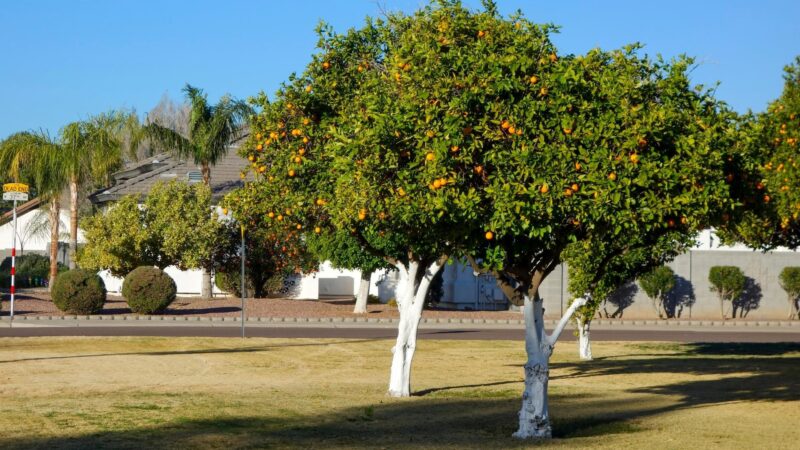
The ideal time to fertilize fruit trees is during early spring to ensure healthy plant growth and higher fruit yields. You can also fertilize fruit trees during late winter. It is about 4 to 6 weeks before the flowers and fruits start blooming on your trees.
When Should You Not Fertilize Fruit Trees?
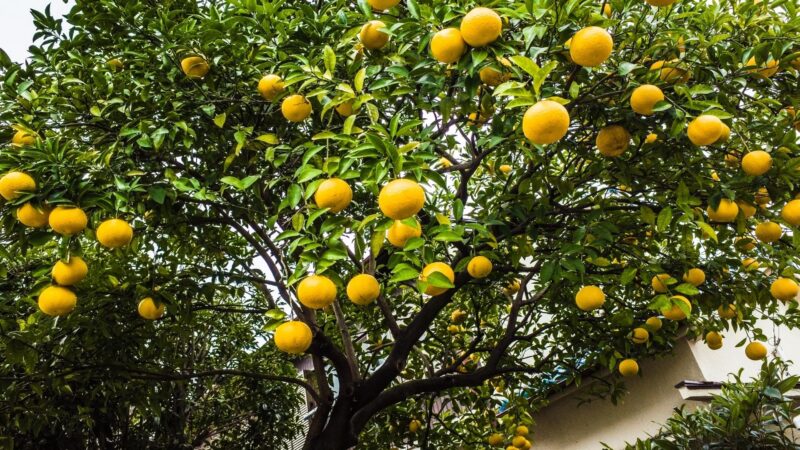
It’s recommended not to fertilize citrus trees late into the fall or early into the winter seasons. Fertilizing during these times not only causes damage to your lawn but also gives cold injuries to your trees.
This happens because citrus trees’ roots extend out into the lawn. Also, it is shallow, so applying fertilizer will negatively impact citrus trees.
What Month Do You Fertilize Citrus Trees?
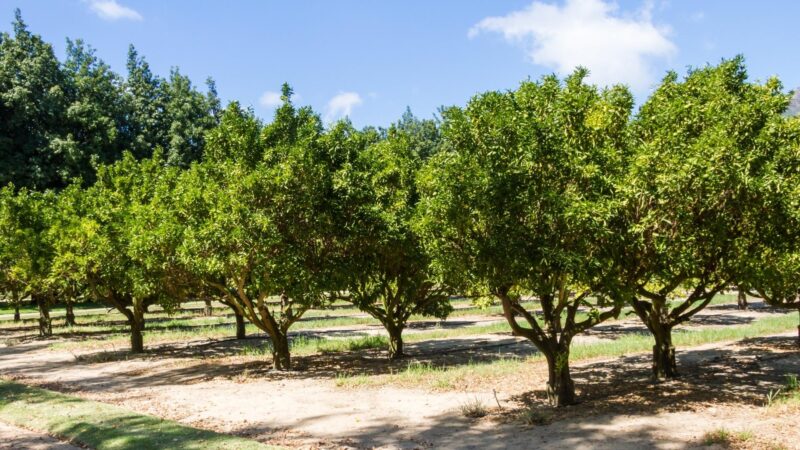
For tangerines, oranges, and grapefruit, apply 1/3 of the total amount of fertilizer. Apply it once from January to February, a second time between March to April, and the third between May to June.
For limes and lemons, apply 1/3 of the total amount of fertilizer in the same schedule, except the third application must be placed between August to September.
How Do You Naturally Fertilize Citrus Trees?
Natural fertilizers for citrus trees are those that naturally occur and originate from animal or plant sources such as alfalfa pellets, composts, manures, fish meal, blood meal, bone meal, composted sewage sludge, leaves, and grasses.
Are Eggshells Good for Citrus Trees?
Eggshells are good for citrus trees. Eggshells, specifically when crushed, can reduce the risk of blossom end rots in fruits since they’re rich in calcium and can provide the soil with the calcium it lacks. Adding eggshells to compost can also work but adding them directly to the soil is already enough.
Are Coffee Grounds Good for Citrus Plants?
Coffee grounds are good for citrus plants. It contains essential compounds such as carbon and nitrogen that can help facilitate the growth of good soil microbes. It can also fight against disease-causing microbes.
How to Fertilize Citrus Trees? | A Step-by-Step Guide
Applying fertilizer will depend on the instructions found on the product label of your chosen fertilizer products.
However, broadcasting is the most common and effective method used by specialists to fertilize trees. Here’s how to do it:
- Lather the prescribed amount of fertilizer onto the entire area of the tree where its roots are located.
- Apply half of the total prescribed amount in one direction and the other half in the opposing perpendicular direction.
- Irrigate as soon as you’re done applying to wash out any fertilizer substances that were dropped on leaves and help dissolve the nutrients more effectively in the soil.
Here are some tips to remember when fertilizing citrus trees:
- Young citrus trees should be applied with fertilizer in a circle around the tree, preferably 3 feet in diameter. Light but frequent doses should be observed during the growing season.
- In its second year, make sure the fertilizer you use is nitrogen-based and apply it in August or early September to ensure maximum nutrient intake.
- After three years, apply the 3 times a year fertilization rule.
Citrus tree fertilizers should be applied 3 times a year and must contain ideal amounts of nitrogen content and other essential micronutrients to ensure maximum growth, health, and fruit yield.
The best time to apply fertilizers is during early spring or late winter, right before the flowers and fruits of the citrus tree bloom. Fertilizing during the middle of fall and winter are times that should be avoided to prevent plant damage.
List of Sources
Coffee Grounds, Eggshells and Epsom Salts in the Home Garden